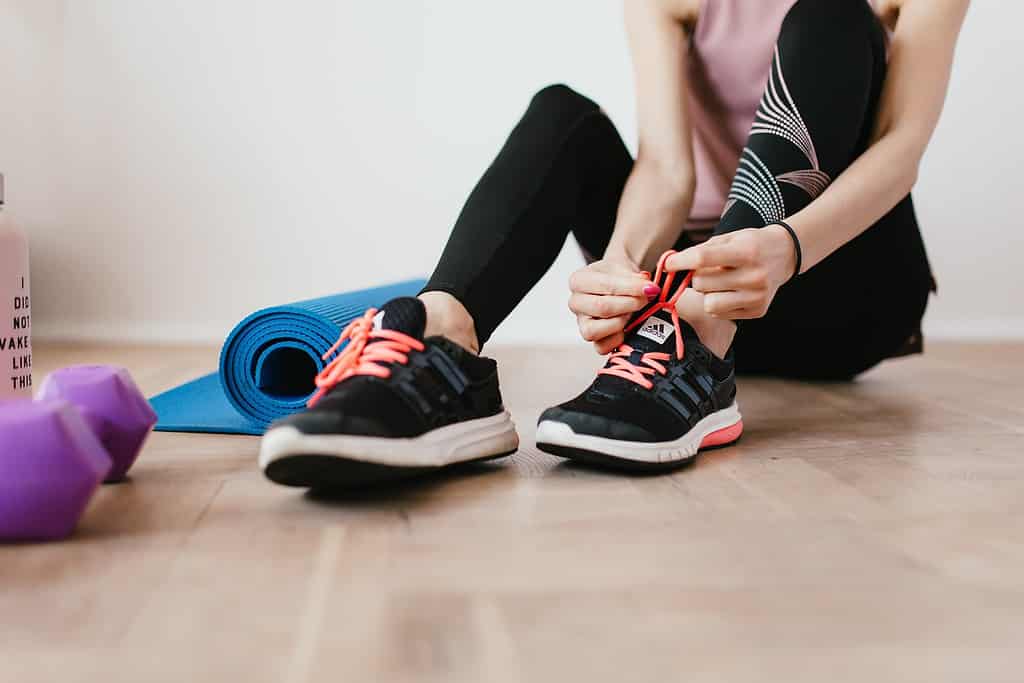The 5 Best Ballet Conditioning Exercises – In Under 15 Minutes
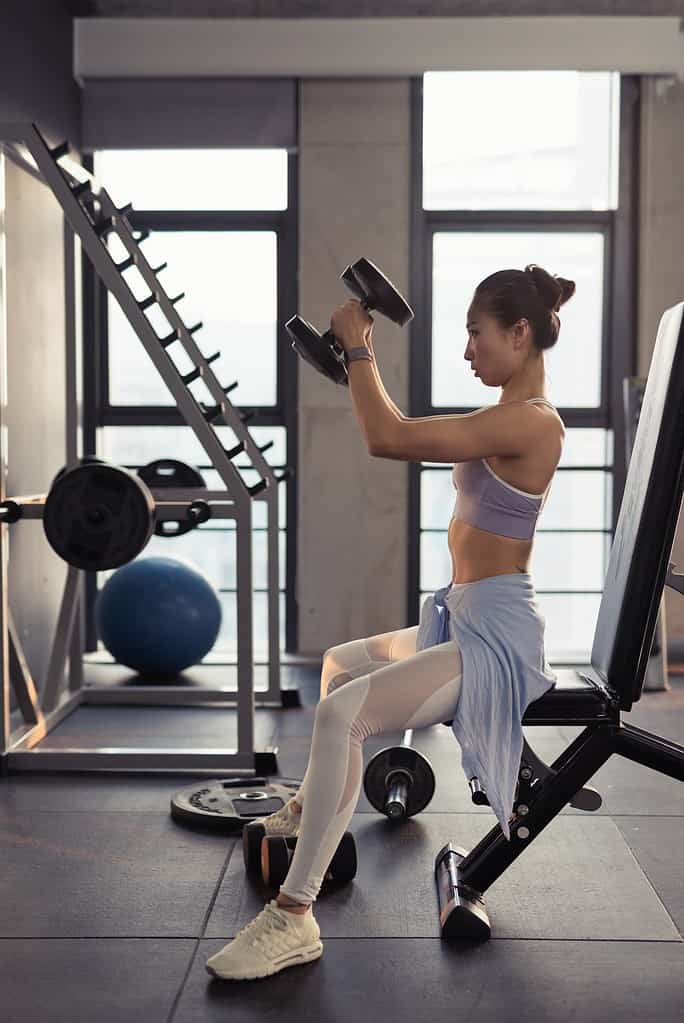
Ballet conditioning is essential for muscle development, body balance, and injury prevention.
Are you focusing on stabilising your ankles or perhaps strengthening your core for better support during adagio?
Are you short on time, but looking for a quick and effective 15-minute ballet conditioning workout to enhance strength and alignment?
Don’t worry, I’ve got you covered.
In this blog post, I will show you the five best ballet conditioning exercises, along with a sample workout that you can follow at home in under 15 minutes.
There’s nothing to lose, and everything to gain!
Disclaimer: This blog provides general information and discussions about health and related subjects. The information and other content provided in this blog, or in any linked materials, are not intended and should not be construed as medical advice, nor is the information a substitute for professional medical expertise or treatment.
WHAT IS BALLET CONDITIONING?
Ballet conditioning is any physical training that aims to improve a dancer’s strength, flexibility, endurance, and overall physical fitness.
This type of conditioning focuses on developing the muscles and skills essential for ballet, including leg and core strength, flexibility, balance, and alignment.
WHAT ARE THE 5 BEST BALLET CONDITIONING EXERCISES?
The five best ballet conditioning exercises are plie squats, standing arabesque lifts, glute bridge with mini ball, calf raises with resistance bands, and port de bras with light hand weights.
Let’s get started!
PLIE SQUATS
DESCRIPTION
Start in a dancer’s second position, with your toes turned out to the sides.
Engage your core, lower your body (by bending your knees), and keep your back straight and chest lifted until your thighs are parallel to the ground. (Maintain arms in 2nd position).
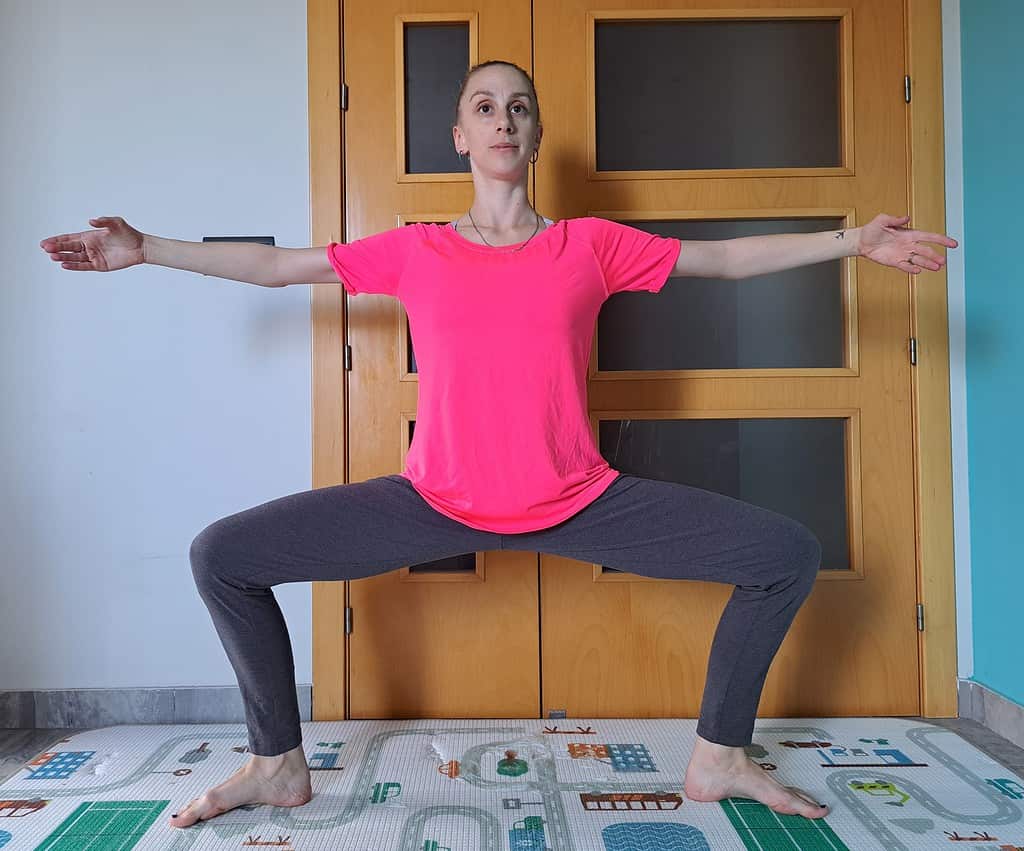
Push through your heels to return to the starting position.
Perform 3 sets of 12 repetitions.
BENEFITS
The benefits of a plie are:
EQUIPMENT NEEDED
Optional: resistance band around your thighs, for an extra challenge.
STANDING ARABESQUE LIFTS
DESCRIPTION
Stand on one leg in a turned-out position (hold onto a chair or barre if needed).
Engage your core, and extend one leg straight behind you.
While keeping your leg straight, raise the working leg upward behind you.
At the highest point of the lift, hold for a count of three, then lower the leg back down to the starting position.
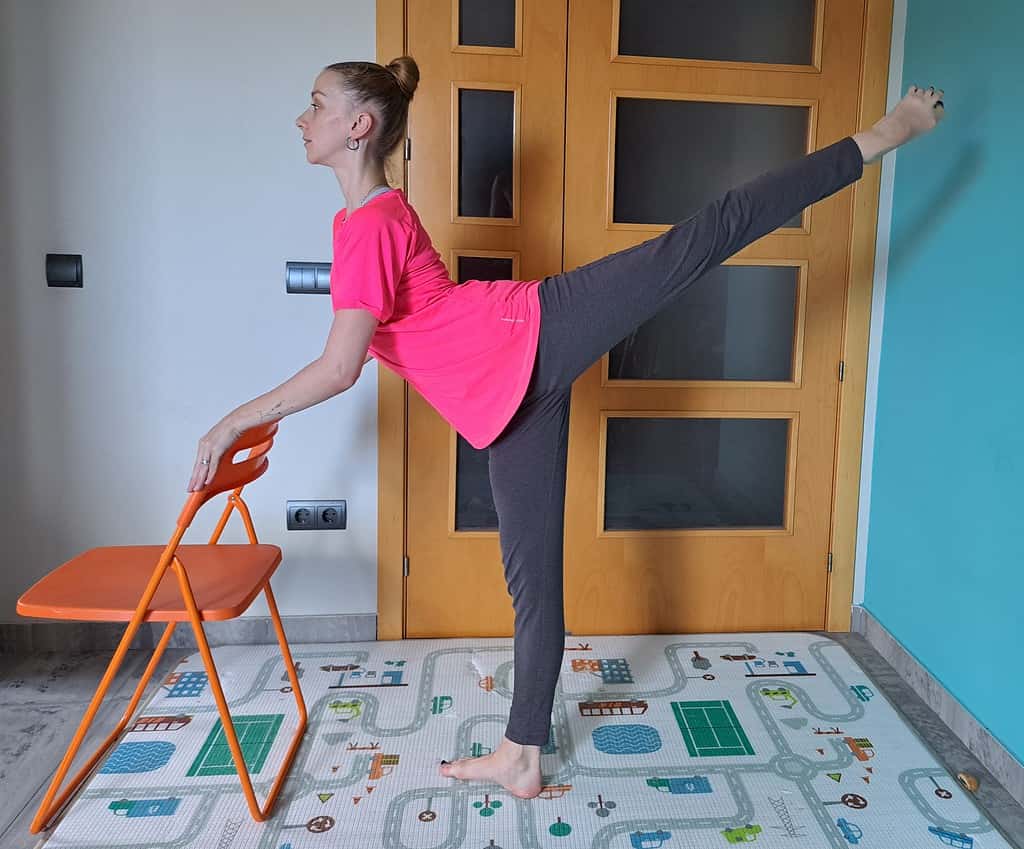
Repeat the same movement in parallel and then switch sides.
Perform 2 sets of 8 reps in both a turned out and parallel position, on both sides.
BENEFITS
The benefits of standing arabesque lifts are:
EQUIPMENT NEEDED
Optional: chair or barre for support.
GLUTE BRIDGE WITH MINI BALL
DESCRIPTION
Lie on your back with your knees bent and feet flat on the floor.
Place a mini ball between your knees (optional).
Engage your core by drawing your navel toward your spine.
Press your heels (squeezing the ball) as you lift your hips off the ground, keeping your knees in line with your hips and shoulders.
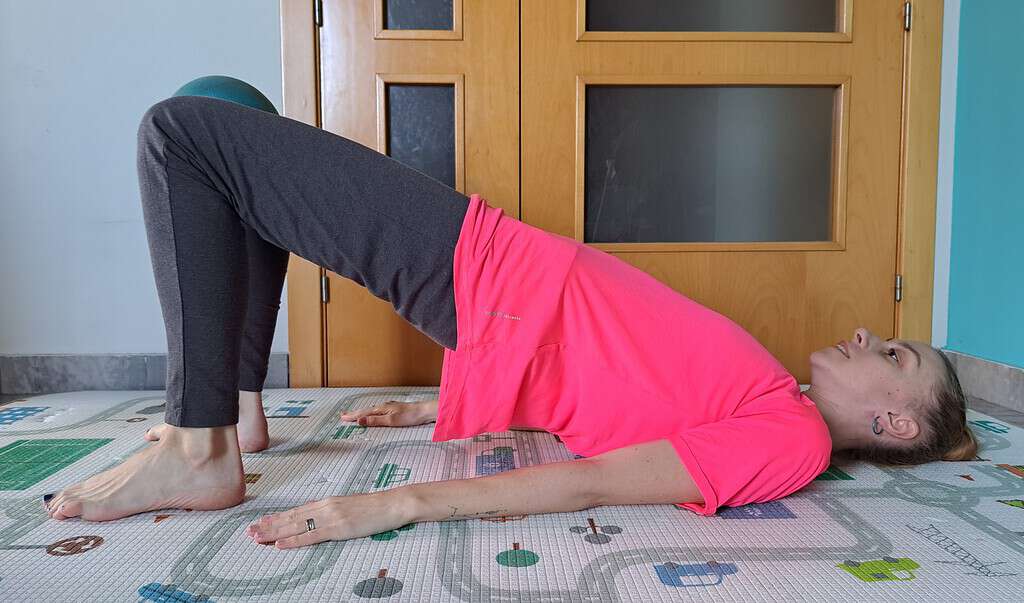
At the top of the bridge, focus on squeezing your glutes.
Hold for a count of three, and lower to the starting position (squeezing the ball throughout the exercise).
Perform 3 sets of 12 repetitions.
BENEFITS
The benefits of a glute bridge with mini ball are:
EQUIPMENT NEEDED
Pilates mat and mini ball.
CALF RAISES WITH RESISTANCE BAND
DESCRIPTION
Begin by placing a resistance band around a sturdy structure, then place the band around your ankle.
Stand up straight with toes pointing forward (hold onto a chair or barre if needed).
Engage your core, lift your heel off the ground, pushing through the ball of the foot until you reach your highest demi pointe position.
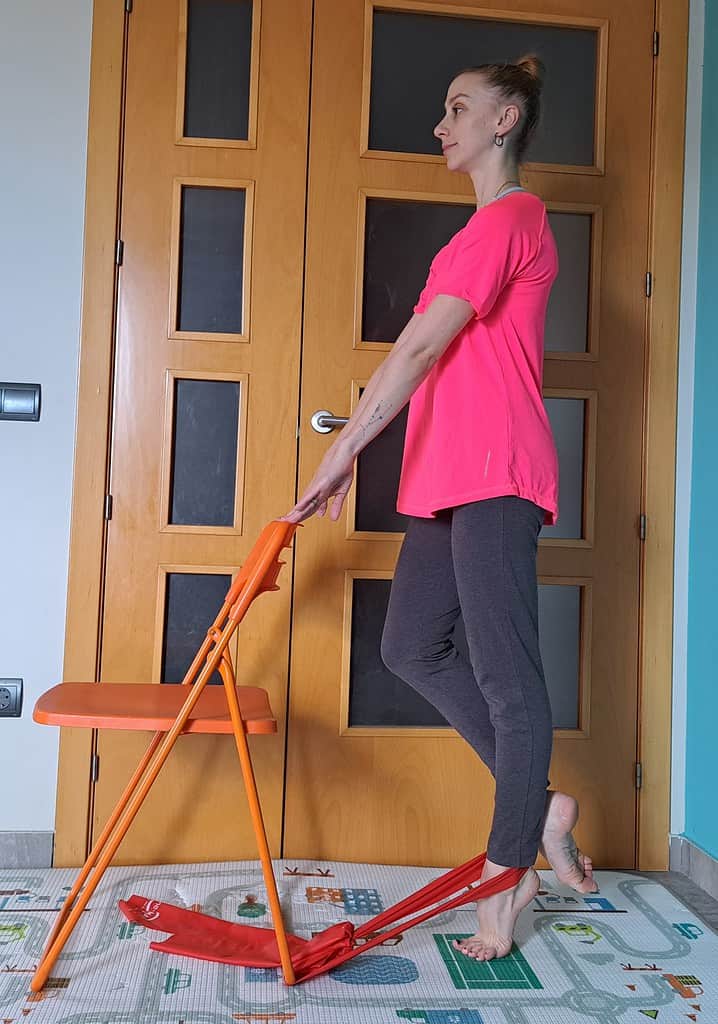
Lower your heel back down, maintaining alignment and control throughout the movement.
Perform a series of 15 repetitions on each leg.
BENEFITS
The benefits of calf raises with a resistance band are:
EQUIPMENT NEEDED
Resistance band, something stable to attach to, chair or barre for support.
PORT DE BRAS WITH LIGHT WEIGHTS
DESCRIPTION
Holding a light hand weight in each hand, stand tall with your feet in the second position.
Engage your core and send your shoulders back.
Start with the arms in bras en bas, moving to 1st, lift to 5th, and then open to 2nd position.
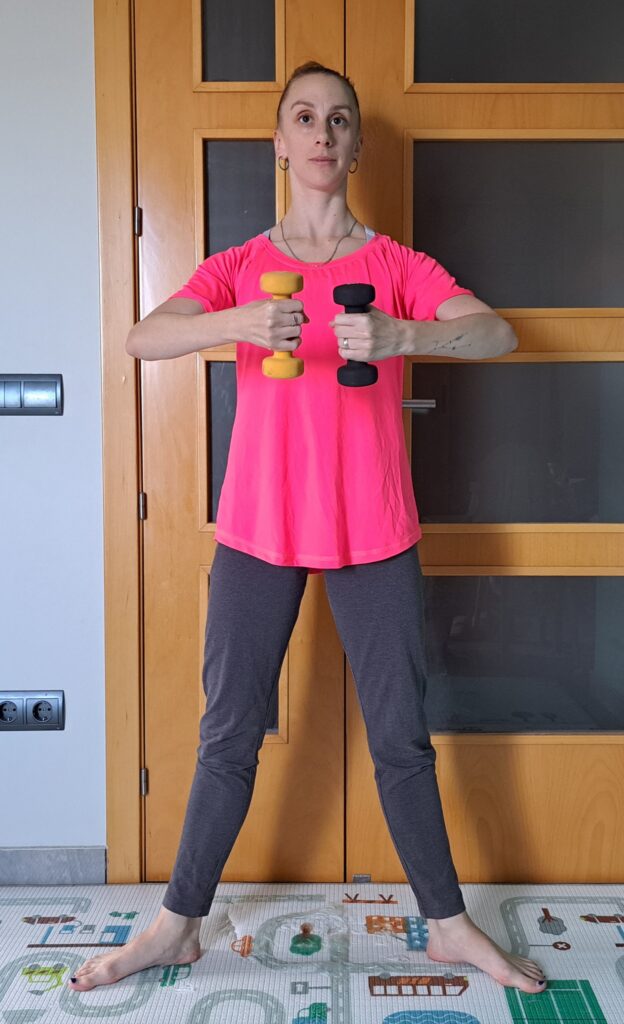
This movement should be done smoothly and with control. Try to lift your arms from the back rather than the shoulders.
Reverse the direction, bras en bas, 2nd, 5th, and then to 1st.
You’ll have a beautiful port de bras in no time!
Perform 5 to 8 repetitions in each direction.
BENEFITS
The benefits of a port de bras with light hand weights are:
EQUIPMENT NEEDED
A light set of hand weights (0.5kg).
GENERAL RULES OF BALLET CONDITIONING
Are there really rules when it comes to ballet conditioning?
Consider the below points as general guidelines aimed at helping you maximise the effectiveness of your conditioning workouts.
Always consider the approach that works best for you.
KISS – KEEP IT SIMPLE STUPID
The KISS approach is great for dancers because it encourages simple and specific training suitable for dancers’ requirements.
By using this approach, dancers can avoid one-size-fits-all workout routines that offer little to no benefit.
There’s no need for dancers to train like endurance runners or bodybuilders.
Keep your conditioning simple, and focused on enhancing muscle strength, flexibility, and endurance in a way that benefits your dancing.
BALANCE IS KEY
Balancing your dance and conditioning is essential.
Balance your schedule by incorporating training, conditioning, strengthening, and rest days (yes, rest days are a must).

Don’t overexert yourself, to the point where you’re too sore or tired for class/rehearsals the next day.
Your ballet should take precedence above all.
TARGET ONE EXERCISE AT A TIME
Improvement in dance, like any skill, doesn’t happen overnight. It takes time and dedication to see results.
A single set of squats won´t turn you into a superhuman dancer.
To make progress, focus on one exercise at a time, or a specific area of your dance.
This approach will be more productive, and give you better results in the long run!
KNOW YOUR LIMIT
Yes, even dancers have limits!
Knowing when to push yourself and when to allow time for rest and recovery is vital for your overall well-being and for your next performance.
How can you survive 15 performances of Swan Lake, if you´re too tired from doing 100 squats?
Limits provide you with the necessary boundaries to safeguard your health.
As dancers, respecting these boundaries is what will allow you to become a better performer and recognise what your body is capable of at any given moment.
So set your conditioning goals with enthusiasm, but be realistic about what you need to achieve.
SAMPLE BALLET CONDITIONING SESSION – IN UNDER 15 MINUTES
This 15-minute full-body ballet conditioning workout can be performed in the comfort of your own home with minimal equipment.
Each exercise should be performed for 1 minute, with exercises that involve both sides performed for 30 seconds on either side.
Try and perform each exercise consecutively, without any breaks in between.
I’ve added a step-by-step guide for each exercise, accelerated for presentation purposes.
EQUIPMENT NEEDED:
Mat, resistance band, mini ball.
FUN 15 MINUTE WORKOUT EXAMPLE
Make sure to stretch your muscles thoroughly after completing this workout!
THE 5 BEST BALLET CONDITIONING EXERCISES FAQs
WHY IS BALLET CONDITIONING BENEFICIAL FOR DANCERS?
Ballet conditioning is beneficial for dancers because it helps dancers to:
HOW OFTEN SHOULD I DO BALLET CONDITIONING EXERCISES?
The frequency of your ballet conditioning exercise can vary depending on your goals, fitness level, and schedule.
As a general guideline, aim to include conditioning exercises at least three times a week. Even a short 15-minute session can be beneficial, so consistency is key.
Listen to your body, prioritise recovery when necessary, and be prepared to adjust your conditioning schedule to align with your specific goals and needs.
SHOULD I TAKE ANY SUPPLEMENTS FOR BALLET CONDITIONING?
While not essential, supplements like protein shakes and muscle recovery BCAAs can certainly benefit dance conditioning, and support muscle recovery.
Keep in mind your body can still receive ample nourishment to support your dancing schedule with a nutritious and well-balanced diet.
Plus, let’s be honest, who truly enjoys the taste of protein shakes, anyway?
IS BALLET CONDITIONING SUITABLE FOR BEGINNERS?
Ballet conditioning is suitable for dancers of all levels, including beginners. It’s a great way to build a strong foundation.
As a beginner, it’s crucial to approach a new workout program with guidance and take a gradual approach for the safety of your body.
I recommend beginning with simple and fundamental exercises before tackling more advanced ballet conditioning exercises.
CAN I DO BALLET CONDITIONING AT HOME?
Absolutely yes! Ballet conditioning can be performed at home.
Home ballet conditioning workouts are super convenient and cost-effective.
They allow you to include additional toning sessions without the need for specialised equipment or a trip to the gym.
Just make sure you have enough space, and remember to keep your focus.
Concentrate on targeting the right muscles and maintaining proper alignment.
It might be a good idea to turn the TV off for this one!
WRAP UP
Incorporating ballet conditioning into your routine is more than a choice; it’s an investment in your dancing future.
So, swap your ballet shoes for sneakers and prepare to achieve your dance conditioning goals.
Just remember to be SMART and REALISTIC at the same time.
